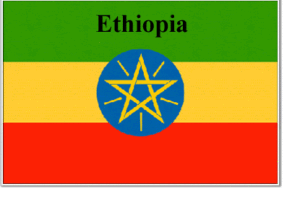 In theory, schooling in Ethiopia is free and compulsory; however, students outside of main cities often lack access to quality schools and teachers, and enrollment and literacy are comparatively low. The Ethiopian system includes ten years of general education, consisting of eight years of primary schooling followed by two years of general secondary education.
In theory, schooling in Ethiopia is free and compulsory; however, students outside of main cities often lack access to quality schools and teachers, and enrollment and literacy are comparatively low. The Ethiopian system includes ten years of general education, consisting of eight years of primary schooling followed by two years of general secondary education.
Preschools are not compulsory and serve children aged 4-6. Primary education begins at age 7 and lasts eight years; it is divided into basic education (grades 1-4) and general education (grades 5-8). At the end of grade 4 students sit for a national exam. Those passing with a score of 50% or better may continue to grade 5. Upon finishing grade 8, students take the Primary School Certificate Exam.
At the end of grade 10, students sit for the Ethiopian General Secondary Education Certificate Examination and are streamlined into either an academic or a vocational/technical track. Students finishing grade 12 must take the Ethiopian Higher Education Entrance Exam to qualify for university studies.
The following chart depicts the grading scale for secondary and post-secondary institutions:
| Scale | Description | U.S. Grade Equiv. |
|---|---|---|
| A: 90.00-100.00 | Excellent | A |
| B: 80.00-89.99 | Very good | B |
| C: 60.00-79.00 | Good | C |
| D: 50.00-59.99 | Satisfactory | D |
| E: 0.00-59.99 | Poor | F |
Primary students study local languages, Amharic (the national language), English, mathematics, social studies, environmental and natural science, physical education, music, and art. Environmental science includes home economics, agriculture and handicrafts.
Secondary students take Amharic, a foreign language, civics, history and geography, mathematics, physical and natural sciences, art, physical education, music, and technology.
Higher education in Ethiopia is offered by the country’s public Addis Ababa University College, which offers degrees and certificates in arts and sciences, engineering, education, and health sciences. A growing number of public and private higher education institutions provide programs in a variety of professional and technical disciplines, from teacher training to forestry.
© 2025 Gaetranslations | Terms & Conditions
Website by: Timefortheweb